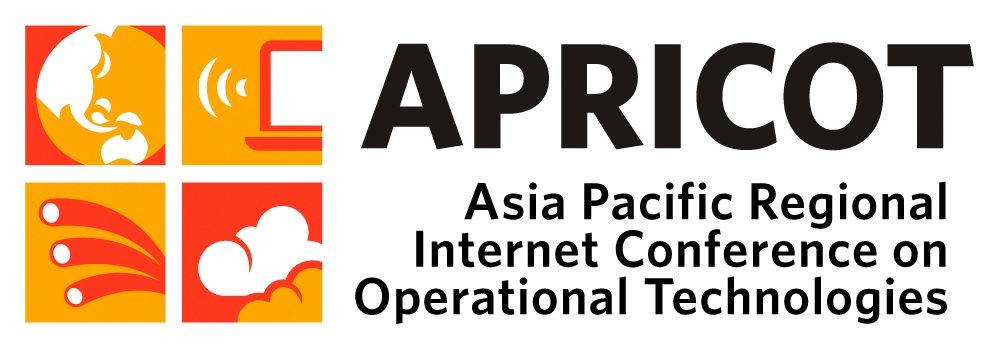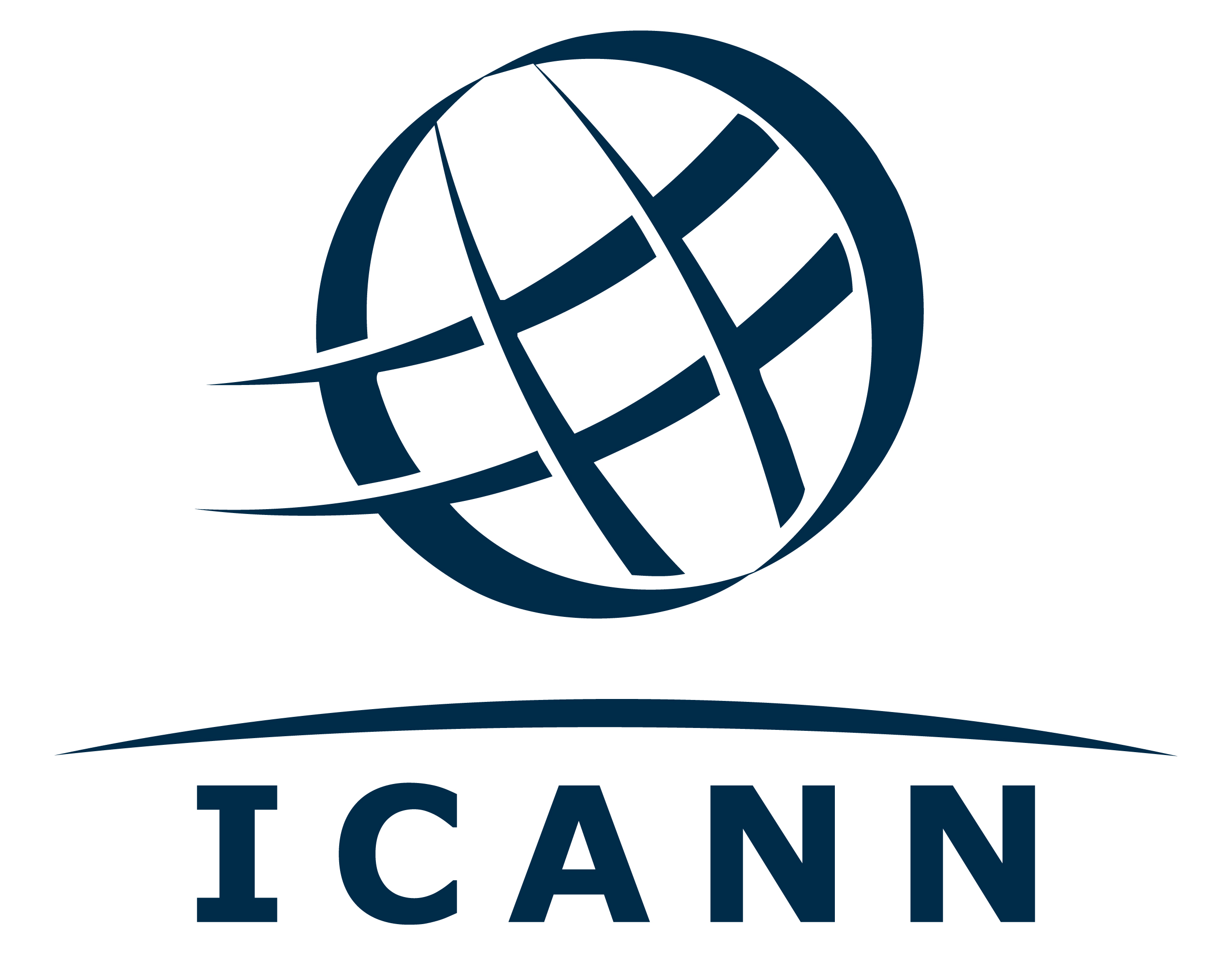Meeting Minutes
AP* Retreat
August 24, 2003
Location: Busan Marriott Hotel, Busan, Korea
Participants:
Abhisak Chulya (APIA/APRICOT), Bok-Gyu Joo (Hongik University), Ching Chiao (APTLD), David West (DENTE), Donyaprueth Krairit (AIT), Fay Sheu (TANeta), George McLaughlin (AARNet), Hirofumi HOTTA (JPRS), Ian Chiang (APTLD), Izumi AIZU (ANR), James Seng (IDA), Jeonghye Choi (IAK), JongHoon Park (KISDI), Kanchana Kanchanasut (AIT), Kapil Chawla (ISOC-India), Kazunori Konishi (APAN), Kilnam Chon (KAIST), Li-ping Chi (TWNIC), Ole Jacobsen (CISCO), Osang Kweon (KISDI), Paul Wilson (APNIC), Pensri A. (AIT), Peter Dengate Thrush (APTLD), Philip Smith (APOPS), Qian Hualin (CNNIC), Shigeki Goto (APAN/Waseda University), Suguru Yamaguchi (WIDE/JPCERT/AI3), Tommy Matsumoto (APNG), Toru Takahashi (IAJapan), Vincent WS Chen (TWNIC), Xing Li (CERNET), Yasuichi Kitamura (APAN), Yumi Ohashi (JPRS)
Meeting started at 9am (local time).
1. Roll Call
The meeting was chaired by Kilnam Chon. The chair explained the agenda and encouraged participation throughout the meeting. The chair then asked attendees to introduce themselves.
2. AP* Organizations and Meeting Reports – Session Chair: Pensri A.
2.1 APNetabuse/ APCAUSE Updates by Jeonghye Choi
The presenter started with the major decision of the past meeting, held in Taipei. That was the formation of regional association. Then she explained objectives and scopes of the APNetabuse/APCAUSE. Objective is the coordination of national/regional activities on net abuse including anti-spam. The scope is on net abuse in general and anti-spam in particular. The next meeting will be with APRICOT 2004 in Kuala Lumpur. There will be 1-day tutorial and 1 day conference. Tentative plan is 2004.2.24-25.
2.2 APOPs by Philip Smith
The presenter gave a very short update on what was happening with APOPs.
- Open forum for discussing operational issues of regional significance
- Open forum for operational information from each country in Asia
- The main participants for APOPs include ISPs network engineers and network operators and, it is not a business function but more places for the network engineers.
- It was set up before actually came into the region and intended as Asia Pacific equivalent of North American NANOG, European EOF, and African AfNOG.
- Existed for many years as a mailing list
- Now also occupies a slot in the 6 monthly APNIC meeting.
- Brief a report from SANOG2, which was a very successful event held in Colombo, Sri Lanka. It’s a South Asia Network Operators Group and formed to cover South Asia stretching from Afghanistan, Pakistan, Nepal, Bhutan, India, Bangladesh and so forth.
- Update on INOC DBA system: Internet in Afghanistan, and tracking Blaster/Nachi
Open to suggestions
- Carry on with operations group reports at future APNIC meetings and APRICOT Conferences?
- Forum for country or regional operators to meet, report and discuss?
2.3 APTLD Updates by Ian Chiang
- Firstly, the presenter reviewed the physical meetings and on-line meetings held in 2003.
- A brief on APTLD’s activities:
§ Publishing APTLD bi-monthly e-newsletter (Jan, Mar, May & July)
§ 2003 Board Election in Feb
§ APTLD’s response to the ccNSO AG’s recommendations
§ Redesigning APTLD’s website on line at the end of April
- APTLD Constitution was approved in May but APTLD Incorporation is in process.
- Prof. Hualin Qian was appointed as ICANN Board, and Peter Dengate was nominated to serve on ccNSO Launching Group in July.
- And then, he came up with ongoing works to be done in the future like organizing some technical/ policy workshops in conjunction with APTLD meeting, and Database Management.
- Outreach:
§ To promote APTLD,
§ More concrete resolution follow-up to recruit new AP members
§ To strengthen cooperation with other regional TLDs/ international organizations
- Concerning APTLD’s Legal Status, he presented that they tried to complete APTLD Incorporation. Efforts are there to amend on the administrative tasks/ process in order to fulfill law requirements for the secretariat and, APTLD constitution in order to meet the future changes.
- Introduction with APTLD People – Board of Directors for 2003:
§ Ramesh Kumar Nadarajah/ .my (Chair)
§ Peter Dengate Thrush/ .nz (Senior Vice Chair)
§ Yumi Ohashi/ .jp (Vice Chair for Membership)
§ Chan-ki Park/ .kr (Vice Chair for Treasurer)
§ Chris Disspain/ .au
§ Hualin Qian/ .cn
§ Richard Saint Clair/ .nu
§ Vincent WS Chen/ .tw
- Committees/ Working Groups organized: Membership WG, Sponsorship Program Sub-committee, Constitutional Committee, Technical Committee, Election Committee, and Liaisons with other regional TLDs.
- APTLD Current Members: .au/ .cc/ .cn/ .cx/ .hk/ .jp/ .kr/ .my/ .nu/ .nz/ .ph/ .sg/ .th/ .tj/ .tv/ .tw/ .vn
- Secretariat (TWNIC)
§ Executive Director: Dr. Vincent W. S. Chen
§ Administrative Coordinator: Joanna Tso (part-time)
§ Administrative Coordinator: Ian Chiang (full-time)
§ Policy Analyst: Ching Chiao (part-time)
§ Technical/ Accounting Support: TWNIC
Suggestions Made
- Advice to APTLD for jointly operating a tutorial with APRICOT and with SANOG
2.4 APIA/ APRICOT Updates by Abhisak Chulya
- The presenter took a little bit back to APRICOT’s decision to merge with APIA.
- The objectives of APIA are used to provide a legal umbrella for APRICOT.
- Restructuring of the Board:
§ APIA Board: Abhisak Chulya
§ APRICOT Management Committee: Philip Smith – working closely with the local hosts who organized APRICOT year by year.
§ APRICOT Administration Committee: Vincent Chen
- Secretariat: PIKOM – Dr. Wong Say Ho/ Wendy Liew
- APRICOT itself tried to gather with all those AP organizations once a year. And now it is trying to broad the scope and to cover a lot other AP organization in coming year to use APRICOT brand to attract the participants.
- Stakeholders:
§ Current – APNIC, AP*, APOPS, APTLD, APNG
§ Future – APCERT, APCAUSE, IPv6 Forum, SANOG, ASIA PKI Forum
- Having APRICOT twice a year like SANOG, which is trying to cover the area in South Asia.
- More active volunteers are welcome. (Contact Ole)
- Revenue Stream:
§ More sponsorships: Singtel, NTT, Reach etc.
§ More participants
§ Subsidy from other organization like IAJapan
- Next APRICOT will be in Kuala Lumpur during 2004.2.18-27.
2.5 AP* Retreat secretariat by Pensri A.
- The AP Joint Secretariat has been transformed to AP* Retreat secretariat.
- The legal cooperation of AP Joint Secretariat has been given to APAN Secretariat in April.
- Functions of AP* Retreat Secretariat:
§ Manage AP* website
§ Administer AP* Retreat
- The presenter explained about estimated expenses and incomes and invited contributions from AP* organizations. APNIC confirmed its support to the AP* retreat activity.
2.6 WSIS Updates by Izumi Aizu
- Proposed by delegates to the ITU Plenipotentiary meeting in 1998 and endorsed by the United Nations General Assembly as a multi-sectoral approach.
- Two-Phases:
§ Geneva in December 2003 will adopt a declaration of Principles and Action Plan
§ Tunis in 2005 will access progress and refine the Action Plan with a focus on development
- Objectives:
§ To develop a common vision and understanding of the Information Society
§ To better understand its scope and dimensions
§ To draw up a strategic plan of action for successfully adapting to the new society
- Proposed themes for WSIS
§ Access to ICTs for all
§ ICTs as tools for social and economic development
§ Confidence and security in the use of ICTs (More or less added after September 11)
- In the development issues, ICT now is proceeding as a sort of the new International Agenda and especially with UN MDG (Millennium Development Goals) adopted.
- So far, the developing countries have not been given enough set of support or strategic approaches to develop their own societies fully.
- There are some expectations that ICT made clear different role then conventional approaches, and also social impacts of ICT deepening.
- And then, the speaker gave the reasons why ICANN became the biggest focus at WSIS process.
Open to questions
Q: Was there anybody from ICANN or from the technical community there tried to educate these people?
A: The presenter replied that he had proposed to form some kind of educational workshops in Geneva.
2.7 ALIRE/ InterLAB Updates by Kanchana Kanchanasut
- The presenter gave a brief update on the activities to set up a research and education lab at AIT.
- The formalization process through the AIT mechanisms was put in the processes which was already presented at AP* Retreat in 2000.
- The focus will be on research and Internet technology, social and policy issues, and also on application.
- A permanent training center will be set up for Internet engineers. Multicast are set up all over the Thai education network.
- On a degree program, a post-graduate education will be there and taking approach of having joint degree program and linkages with other educational institutions.
- Setting up the Committees to work very efficiently and effectively.
- Invitation of supports from the AP* orgs
2.8 APNIC Updates by Paul Wilson
- The presenter started with the things happening in the APNIC.
- He gave the RIR Allocations for Ipv4 and Ipv6 by the help of graphs in PowerPoint presentation slides.
- In developments in 2003, APNIC started with the member services which have been gradually increasing services to ISPs and members of the APNIC and, helpdesk with increasingly advanced members only in the face which is called MyAPNIC.
- Trainings are ongoing with the development of training courses including DNS technical training.
- Collaboration with AIT on training administration is still in process, and discussions with SOI-Asia and ALIRE/ InterLab in the future.
- Meetings:
§ Simultaneous Interpretation (now a regular service)
§ Multicast – Trial at APNIC 15 (now a regular service)
§ Real-time Reporting – Trial at APNIC 16 (Broadcast via web and Jabber)
§ Other Activities – Onsite Notice Board (ONB) – Helpdesk
- The presenter then briefed on the Fellowship Fund.
- Outreach:
§ Meetings – SANOG II, JPNIC OPM, APJII OPM, IETF, RIRs, ICANN, WSIS, and ITU
§ Memorandum of Understanding
- Pacific Islands Telecommunications Association (PITA)
- South Asia Network Operation Group (SANOG)
- Again on the technical services, explained about rootserver projects and the deployed servers.
2.9 APNG Updates by Xing Li
- The presenter gave only a short update on APNG and APNG Camp.
- The next APNG chair will be Tommy Matsumoto.
1. VoIP policies in Asia – Session Chair: Kanchana Kanchanasut
VoIP (or phone over the Internet) is becoming increasingly common in Asia, and we would like to visit what is going on among various countries.
1.1 Japan by Hirofumi Hotta
- In Japan, a breast of changes drives the trends in communication market for 10 years. The presenter discussed on the drivers for those trends.
- Changes:
§ Privatization of Public Telecom Corporation
§ Relaxation of Regulation
- Evolution of Devices:
§ Small, Wireless, High-functioned (e.g., Mobile Phones with cameras)
- Popularization of Internet and IP Technology:
§ From Circuit Exchange to Packet Data Exchange
- And then, the presenter showed the slides on Patterns of IP Phones which are already in service and the ones coming very soon.
- In terms of IP Telephony and Quality Classes, the presenter presented a comparison chart between Classes: A, B and C depending on General Voice Transmission Quality Rate, End-to-End Delay and Call Failure Rate (Connection Quality).
- From 2.27 million in end of 2002, the numbers of IP phone users will be around 22.73 million in 2007.
- Current and Future Issues:
§ Emergency Calls (under R&D)
§ Caller ID Notification from IP Phones (in service in fall 2003)
§ Call from PSTN or Mobiles to IP Phones (in service in fall 2003)
§ Call among IP Phone Service Providers
§ Call during Power Failure
1.2 Thailand by Donyaprueth Krairit
- Firstly, the presenter took a quick look through why we all were concerned about VoIP and what VoIP could do.
- Technically, VoIP is a voice transmission in data packets.
- What regulations/ policies should be used to govern this new form of transmission?
§ Regulate as voice communication
§ Regulate as data communication
- The presenter explained why the VoIP became an important issue.
- Telecom Providers in Thailand:
§ TOT Corporation which controls the domestic voice communications
§ CAT Corporation which controls the international voice communications and Data communications
- In terms of Regulatory Framework, TOT and CAT are both operators and regulators. Concessions based on BTO scheme to winning bidders on selected services are given. The concessions could be of the same kind of due to overlapping roles and authority.
- Talking about competition, the presenter gave some information about TOT and CAT in domestic calls, international calls and Internet services.
- VoIP is prohibited in Thailand and all Internet traffic has to go through CAT International gateways.
- Future Directions (Thailand):
§ The establishment of the National Telecommunications Committee (NTC) as independent regulatory body
§ The Telecommunications Act is in the approval process from the Parliament.
§ Long-term policy goal is set for liberalization.
- Then, the presenter gave some information on the future of Internet in Thailand.
- Some SEA countries like Malaysia, the Philippines, and Singapore are now licensing VoIP freely as another independent service. In Laos and Cambodia, it is available but illegal. In Vietnam, allow only outbound Internet-based calls from computers to computers and computers to telephones while prohibiting inbound Internet phone calls.
- QoS of VoIP in SEA:
§ Only Singapore has clear QoS results on
- System Accessibility
- Service Activation
- Number of Complaints
§ The Philippines asks for QoS but does not enforce
§ Thailand has informal user surveys.
- About the future of VoIP in SEA, the move is now going toward enterprise VoIP and private least-line infrastructure because it is much easier and the profit margin is higher in these markets.
Q: Currently, learnt recently in China that History of Information Industry keen to promote the silver forms or mobile forms to help this special device, universal access issue and even thinking to set up universal service application to the mobile carriers which might be very interesting. But the mobile carriers seem to have more penetration and potential to rapidly expanding their infrastructure. Is it a single movement in other Asian countries?
A: The same kind of movement in the Philippines which has liberalized their market and the Philippines government licenses out the cellular operators more. So very similar to the China case.
1.3 Korea by JongHoonPark
- Firstly, the presenter gave topics on which the discussion made.
- In Korea, VoIP is voice telecommunication services provided through the Internet.
- In Japan, it is defined as communication service using a packet switching system where voice is converted to IP packets and transmitted.
- And then, he explained about the steps of VoIP introduced in Korea:
§ Phone to Phone mainly provided by SSP(type1) and FSP (1998)
§ PC (Web) to Phone mainly provided by SSP (type2) (1999)
§ IP Phone to IP Phone mainly provide by SSP (type1, 2) (2000)
§ Wireless IP Phone to Wireless IP Phone (post 2003) provided by whom?
- After that, he gave the characteristics of Internet Telephony, and analyzed market demand in Korea.
- Internet telephony traffic dropped sharply after service is charged since 2001.
- Market size of 20 billion won at the end of 2002.
- This year, conducted a survey in order to know the market potential.
- Barriers:
§ Legal Barriers
§ Cannibalization
§ Perceptions of users
SPONSORED BY
Internet Society

Asia Pacific Regional Internet Conference on Operational Technologies

Internet Education and Research Laboratory.

Asia-Pacific Network Information Centre

Internet Corporation for Assigned Names and Numbers

 www.apstar.org
www.apstar.org



 www.apstar.org
www.apstar.org



